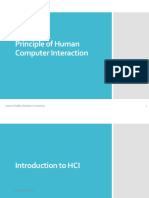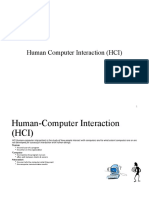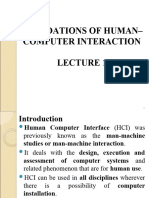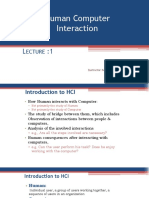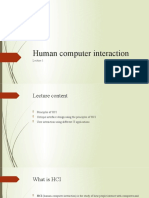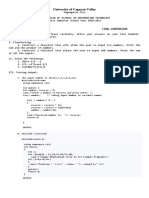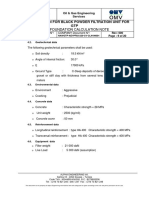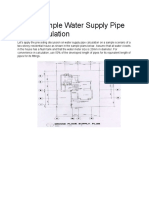0% found this document useful (0 votes)
18 views48 pagesHuman Computer Interaction - 1
The document provides an overview of Human-Computer Interaction (HCI), covering its importance, principles, and various components such as cognitive psychology, ergonomics, and user interface design. It emphasizes the need for user-centered design to enhance usability, effectiveness, and safety in technology interactions. The document also discusses the roles of different disciplines in HCI and the significance of understanding user needs and capabilities in system design.
Uploaded by
Niyonshuti YvesCopyright
© © All Rights Reserved
We take content rights seriously. If you suspect this is your content, claim it here.
Available Formats
Download as PDF, TXT or read online on Scribd
0% found this document useful (0 votes)
18 views48 pagesHuman Computer Interaction - 1
The document provides an overview of Human-Computer Interaction (HCI), covering its importance, principles, and various components such as cognitive psychology, ergonomics, and user interface design. It emphasizes the need for user-centered design to enhance usability, effectiveness, and safety in technology interactions. The document also discusses the roles of different disciplines in HCI and the significance of understanding user needs and capabilities in system design.
Uploaded by
Niyonshuti YvesCopyright
© © All Rights Reserved
We take content rights seriously. If you suspect this is your content, claim it here.
Available Formats
Download as PDF, TXT or read online on Scribd
/ 48

